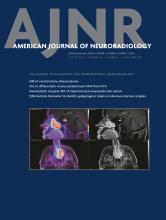We have read with great interest the recently published article entitled, “A Pragmatic Randomized Trial Comparing Surgical Clipping and Endovascular Treatment of Unruptured Intracranial Aneurysms” in the American Journal of Neuroradiology.1 The results of the study, which randomized patients with unruptured cerebral aneurysms to endovascular or surgical treatment, have captured our attention, and we find the extracted data highly useful.
The researchers should be commended for their effort in conducting such a comprehensive study. However, I would like to address an important concern related to the challenges encountered during patient recruitment for randomized trials in a complex condition like this. Consequently, the analyzed group may represent a small subgroup of patients we encounter in our clinical practice.
In this regard, I would like to draw attention to another study conducted by the same authors, the CAM study, which we believe could be more valuable in terms of providing clinically relevant results. The CAM study not only randomized patients into treatment groups compared with a conservative group, but it also included a registry of nonrandomized patients. This approach may offer a more realistic perspective and enhance the applicability of the findings to real-world clinical practice.
While we appreciate the significance of the CURES study,1 we would encourage further investigation and analysis within a larger patient population to address the limitations associated with patient selection. By doing so, we believe that the conclusions drawn from future studies such as the CAM study would provide a more comprehensive understanding of the treatment options for unruptured cerebral aneurysms.2
Once again, I would like to express our gratitude to the authors for their dedication to advancing scientific knowledge and improving patient care through their research. We remain eagerly engaged in the ongoing dialogue surrounding this topic and look forward to the publication of subsequent studies that address the concerns outlined above.
Footnotes
Disclosure forms provided by the authors are available with the full text and PDF of this article at www.ajnr.org.
References
- © 2023 by American Journal of Neuroradiology












